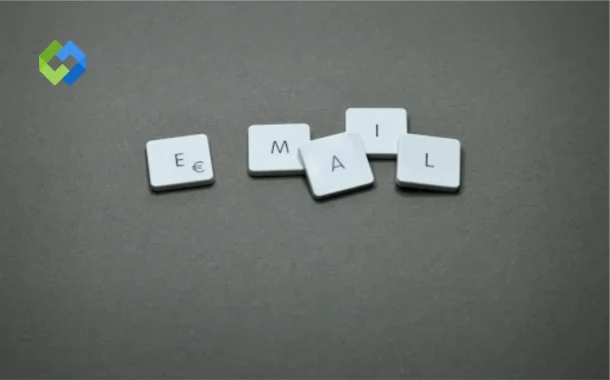Future-oriented brands won’t be merely sending messages in 2026 – they’ll either do it smarter, or arrive in the spam folder. And by no means can you overlook this marketing solution; at least not in a market where the email is the gateway to customers for more than 8 in 10 companies. So, what will keep your emails’ spark lit? The future belongs to brands whose emails are just what customers expect them to be: timely, relevant, and worth opening.
Here’s how to master email marketing in your own business in the coming year.
Table of Contents
Table of Contents
The main email marketing stumbling blocks
It only makes sense to understand the areas where most businesses fail to align with their customers in order to do the next email marketing campaign right. Right now, brands are struggling to have their emails observed and accessed in the first place. Yahoo, Outlook, and Gmail are boosting spam filters and making authentication standards like DMARC and DKIM stricter, making it difficult to make it to the inbox, to begin with. Brands must ensure they follow deliverability hygiene best practices to avoid their content being sent to the promotions tab – or worse, the spam folder.
The intentional care we talk about means paying close attention to fundamentals like:
- Engagement signals: focus on quality content that encourages opens, clicks, and replies – signals ISPs use to determine whether your emails deserve to enter inboxes
- Consistent sending behavior: this will help you avoid sudden volume spikes, maintaining a steady rhythm to build trust with internet service providers (ISPs)
- List hygiene: make a habit of regularly cleaning your subscriber lists, removing invalid or out-of-use addresses, and honoring unsubscribes promptly
- Authentication protocols: setting up DMARC, SPF, DKIM, etc., correctly so providers can test your emails for legitimacy
- Reputation monitoring: monitor your sender score and feedback loops to spot issues before they aggravate.
AI-based email marketing
AI is the primary trigger to the change you’re witnessing today, and it can be beneficial for your marketing campaign when leveraged correctly. AI-driven email marketing platforms have emerged as the perfect tools to create campaigns that feel personal and user-centric, delivering conceptualized and optimized content that simply triggers the desire to access that message. This type of email marketing platform leverages superior machine learning (ML) algorithms to understand subscribers’ behaviors in real time, spot patterns, and forecast future engagement, analyzing customer purchase histories and points of interest. What are the heavyweights they’re most likely to engage with? Why are customers so deeply enamored with the Asian platforms that deliver value for a fraction of the cost? You’ll then see how you can highlight your brand’s strongest suits, whether it’s free delivery, a low minimum spend, or something else that sets you apart.
AI also helps split audiences, allowing you to send that specific subscriber the right message at the right moment. AI-driven platforms also offer analytics and insights that will empower you to make smarter marketing decisions and optimize ROI – an achievement that you need in the long run.
Last but not least, visitors’ first reaction and feelings about the marketed page they land on can also make or break your email marketing campaign. It’s not only about the email itself, but also about where it directs visitors, which can either build or damage the brand’s reputation. Sustainable success extends to more areas of marketing, which is why today’s top-tier companies that know how to maintain their edge use a reliable landing page builder and ensure the outcome resonates with customers’ expectations.
Stepping up the personalization game
Many businesses mistakenly believe that mentioning a subscriber’s first name will make them feel like the mail has been handwritten for them specifically. But this is never the case, and they can detect deceptive practices, leading to the unfortunate case where they unsubscribe or simply overlook these emails. AI enters the stage here too, helping marketers assess user purchases, buying and browsing habits, and engagement patterns to create messages that feel tailored to each recipient’s preferences and needs. For instance, you can recommend a female customer a shampoo for a sensitive scalp with fast and free delivery, with plenty of honest user feedback, and with other strong suits that are likely to convert.
The more personalized the email feels, the higher the likelihood of opens and conversions. In fact, 75% of consumers are more easily convinced to purchase from brands that send tailored content, highlighting the importance of bespoke experiences in driving consumer purchasing decisions.
Interactive content
Static emails are understandably boring these days; customers want everything dynamic and fast-paced, and they don’t spare emails. Embedded videos, surveys, polls, and so on will become the standard for building engagement, and Veo 3.1 AI makes it easier than ever to generate those videos from just text or imagery. They don’t just make emails more interesting, but also offer instant feedback about your audience’s behavior and tastes.
The more your email becomes a place of activity, the likelier the user is to engage with your message and respond positively. Email becomes your best and most appealing ally.
Compliance with regulations
Even with Google’s 2024 decision to allow limited tracking, third-party cookies are steadily losing their relevance in digital marketing. Stricter privacy regulations and changes mean that you should shift your attention (and capital) towards tools and solutions that are less and less, if at all, reliant on third-party data.
Instead, you’ll begin leveraging first-party information – data that customers give away consensually through all sorts of methods, from forms to loyalty programs. Collecting consent thoughtfully and using that data to enhance user experience strengthens trust, an increasingly crucial factor in your long-term engagement rates and strategy to stay on top of increasingly skilled competition.
Ending note
Email marketing isn’t just staying afloat – it’s entering a new age and thriving, all the more when compared to the bulk of social media platforms, where organic marketing is no longer in its prime. You need to catch this wave of innovativeness and user-attentiveness, so giddy up and tick the boxes we’ve broken down above.














